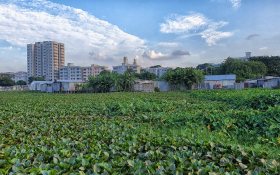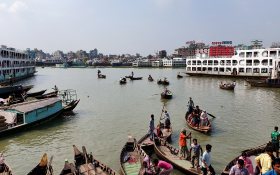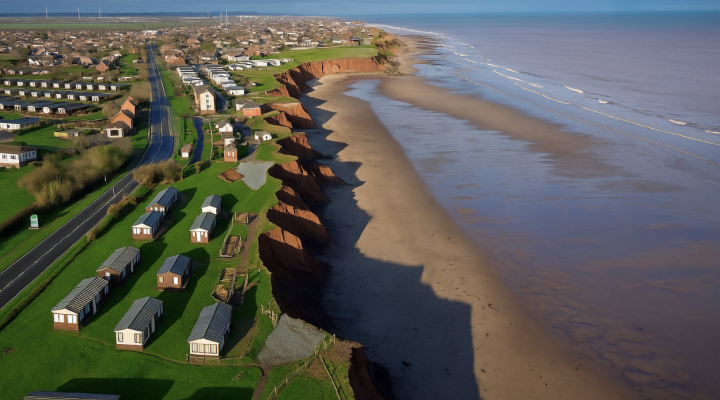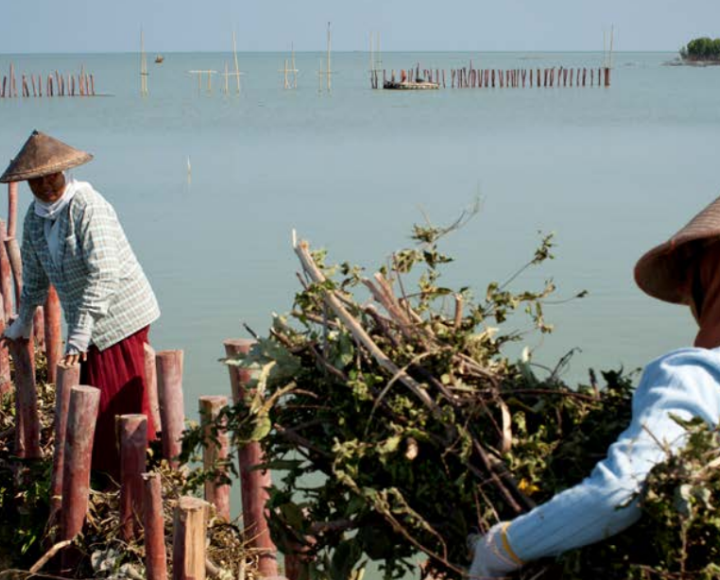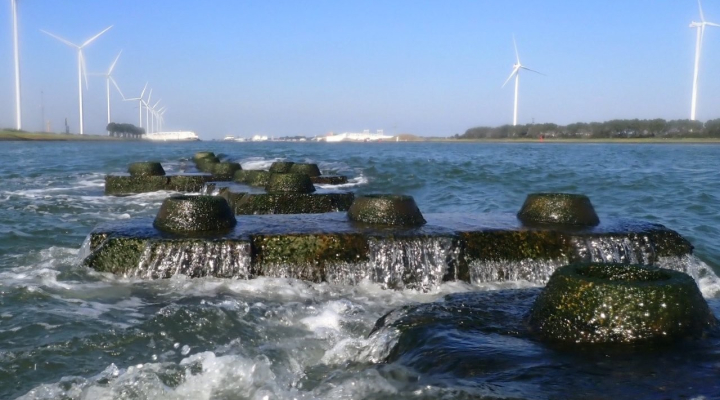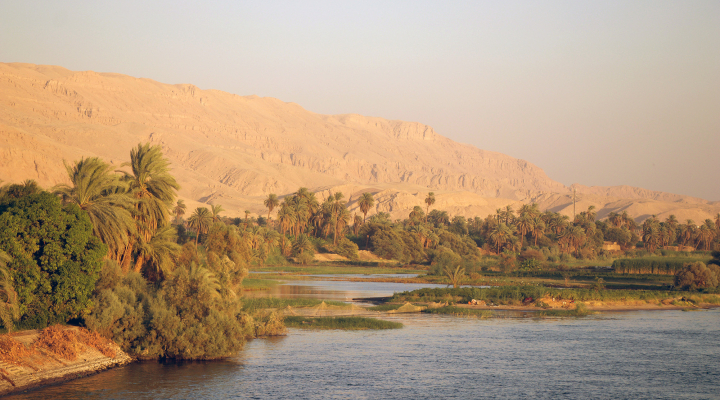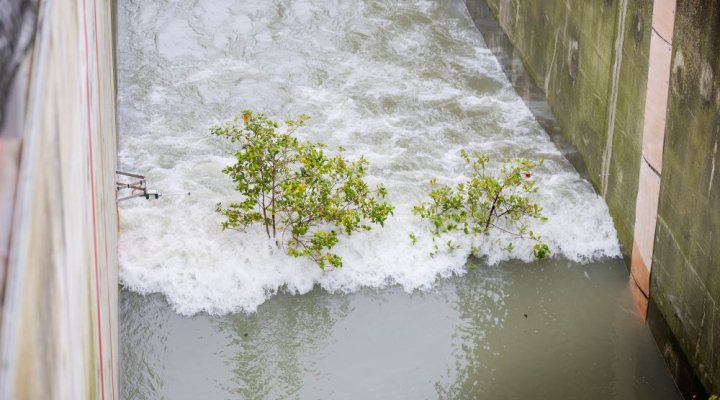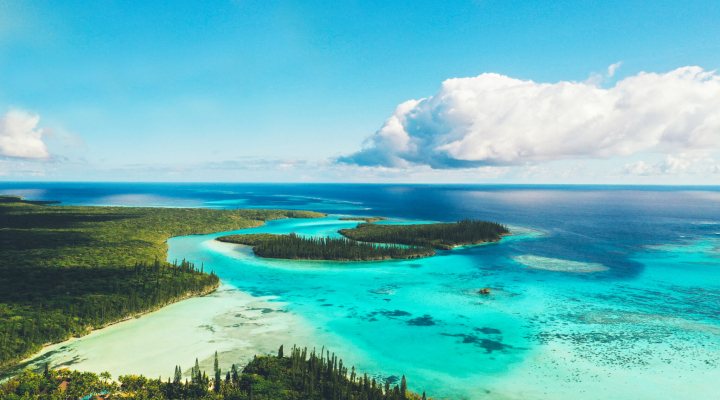Unlocking the potential of the coastal zone in Bangladesh
Fifty years ago (November 11, 1970) Bangladesh was hit by cyclone Bhola. The coastal region was in ruins and most of it had to be rebuilt. In collaboration with the Netherlands, polders were built to protect the population and to provide food following the rebuilding. Delta expert and publicist Joep Janssen set out to see if that had been achieved.
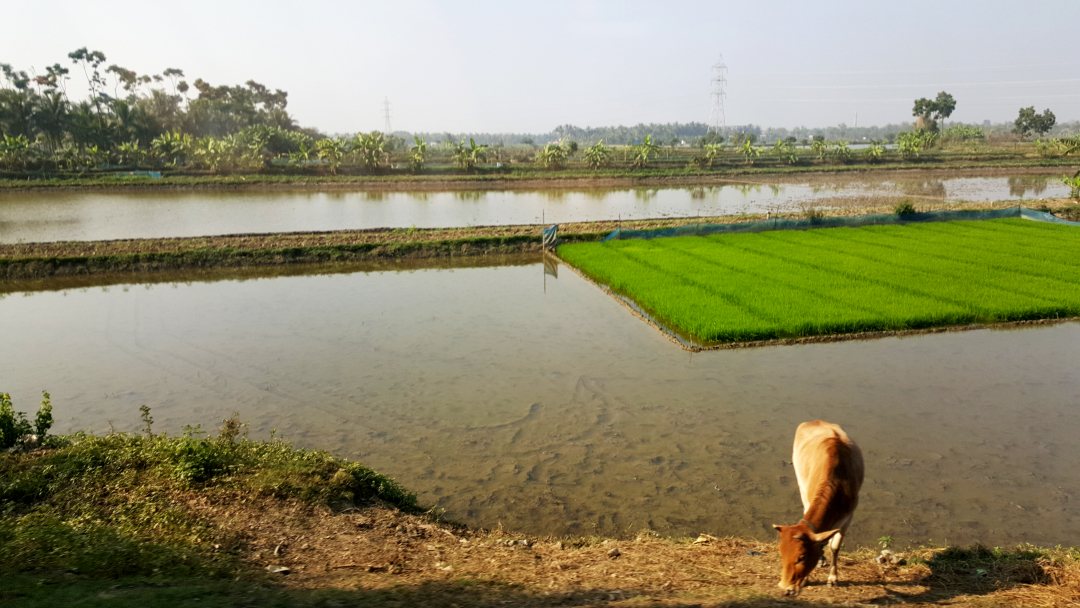
In the early 1970s, Bangladesh suffered a lot of setbacks in the form of war and natural disasters. However, they did bring the population together in some ways. On top of that, international donors supported the reconstruction, providing technical knowledge to improve water management and food security. But perhaps most importantly, the population showed decisiveness.
A Bangladeshi planning committee of policymakers, economists, and scientists started working on a rebuilding strategy, and they presented the first five-year plan in a very short time. The main objective was to increase agricultural productivity and reduce poverty. This was done by reclaiming the fertile, but damaged delta area and cultivating it into the country’s rice bowl. From this point, Bangladesh started to build polders all along the coast.
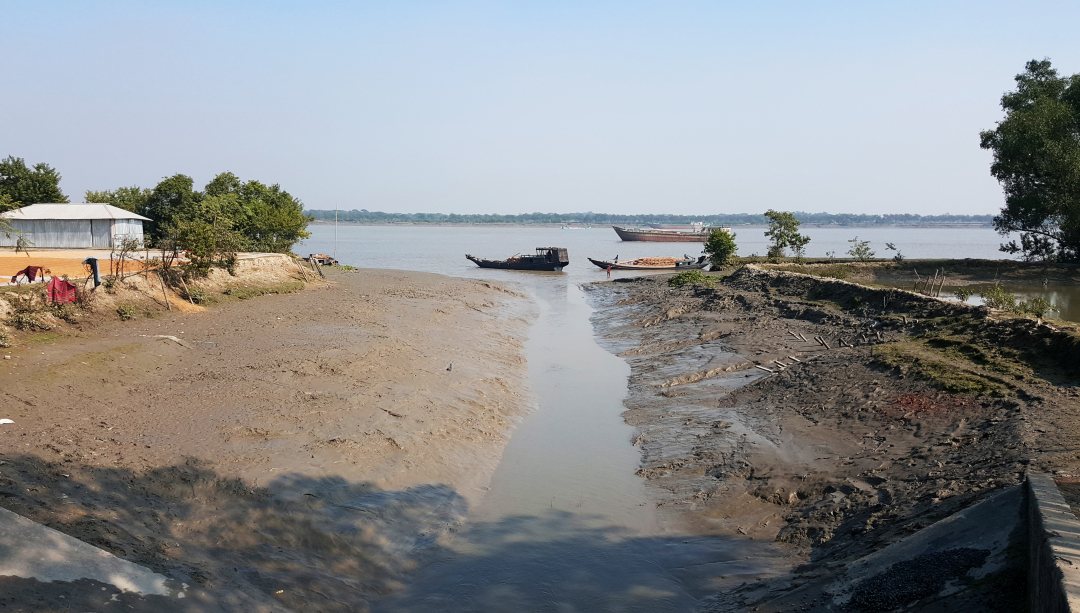
The reconstruction
The Bangladesh government acted to protect people against the cyclones. With foreign aid, 139 coastal polders have been built, protecting around nine million people against flooding and salinity.
Although offering protection, polders block the flow of water from the rivers to the sea. To tackle this, a drainage system of locks and channels was constructed to allow excess water from rainfall to flow off during low tide, in turn also making the land more productive. Like the Netherlands, the Bangladeshi polder became a metaphor for a mentality of working together to keep dry feet. An early warning system was also implemented, so that the population could be brought to safer places faster in times of disaster.
According to Swarna Kazi, senior disaster risk management specialist of the World Bank, the measures have ensured that the number of cyclone victims has dropped significantly. “There has been a 100-fold decline in mortalities from cyclones in the last 50 years. It’s a remarkable result showing that the country has built significant experience in resilience and is a leading country in disaster management.”
“This is done through actual investments – structural and non-structural. Along with disaster shelters, coastal embankments, and drainage systems, you need early warning systems and awareness to become resilient. It has to be an integrated approach.”
Kazi works on a multimillion project that protects 10 coastal polders from tidal flooding, storm surges, and reduce saline intrusion to enhance agricultural productivity. She explains that the population and food production must be protected against rising sea levels and more severe cyclones as the sea warms. “Climate change is a fact, but Bangladesh is investing in resilience to mitigate some of its potential consequences.”
The polder model in practice
Khulna is located in the south of Bangladesh where the polders start. If you drive around here, you experience the huge power of water because many riverbanks have been severely degraded.
Here on the coast, people suffer from storm surge and salinization. They have shifted from crops to shrimp farming. This is more profitable, but also riskier and it requires less manpower. Despite this many poor residents tend to move due to the lack of work.
In the North, the polders of the wealthier communities have strengthened dikes. Their income and living conditions seem stable, as they have been able to introduce more profitable crops such as mung beans, watermelon, and sunflowers.
“These polders incentivise more innovation,” said Amirul Hossain, engineer at the Bangladesh Water Development Board. He is involved in the Blue Gold program, a collaboration between the Netherlands and Bangladesh that helps farmers in 22 polders to become more resilient. This is done by building sluices and strengthening dikes, but also by giving courses in water management and agriculture.
That is urgently needed, Hossain believes, because water management infrastructure has deteriorated in recent decades. “Water flow through canals is interrupted due to increase of population, lack of regular maintenance, silt deposition, and riverbank erosion. The water infrastructures in the coastal zone has also been severely affected by many storm surges due to cyclones.”
“Step by step, we are moving forward,” says Hossain. “There are successes of new high yielding varieties of agricultural crops and improved production. Dry season crops such as paddy, vegetables, and fruits, have been introduced and contributed to food security of Bangladesh. The implementation of the Blue Gold Program contributed to these successes.”
“Improved livelihood has become possible due to integrated activities of water management, agricultural production, and community involvement. The program has been playing an important role in poverty reduction and to achieve food security. Integrated participatory water management may be considered as a way forward for improvement of coastal polder management.”
The idea is that the major renovation of the coast can only succeed if everyone participates. The fact is that you participate in the polder all together. These days more and more decisions are left to the polder, for example by the water management groups. They receive money from the government and invest a part themselves for minor interventions and maintenance of the polder.
Agriculture comes after water management
I meet Humayoun Kabir from the Department of Agricultural Extension under the Ministry of Agriculture, who participates in the Blue Gold program. “If water management is in order, agricultural production can increase,” he explains. “That's why we provide training in water management and agriculture to the citizens of several villages in a polder.”
Already 60 thousand farmers have been reached by this practical approach and they transfer their knowledge again to other farmers. These training courses contribute to the increase in food production and income. This is also illustrated by the figures; the crop yields have increased by about 20 percent in the polders of the Blue Gold program. However, this result has been reached in difficult conditions Kabir tells me.
“A major constraint is the conflict of interest of water users inside the polders – between paddy and fish farmers, low and high land farmers, tail and head of the channel farmers. These are reasons for water logging and availability of fresh water in a few older areas.”
“Agriculture is now expanding in coastal areas at a pace we haven’t seen last decades”, says Kabir. “That’s why we targeted the southern part of Bangladesh to overcome the future challenge to feed our large population. We need to go southwards to improve food security through integrated water management.”
With the prospect that the population of Bangladesh will continue to grow and the land for housing becomes scarcer, the coast offers possibilities as agricultural and water innovations become available.
Booming Bangladesh - a serie
Cooperation between Bangladesh and the Netherlands has intensified in recent decades. While Bangladesh experiences rapid and strong economic growth, new challenges and opportunities emerge in the water sector. Within the framework of the Dutch Partners for Water Programme, Delta expert and publicist Joep Janssen collected stories, to gain a better understanding of the local water sector and show the changes that have been jointly initiated. This article is part of a series of interviews called Booming Bangladesh.




